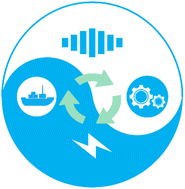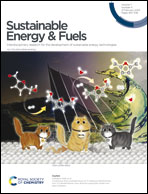A wave energy harvesting system for applications in deep-sea exploration
Abstract
Active heave compensators connect surface vessels to remotely operated vehicles in deep-sea exploration, and abundant kinetic energy is always available to harvest. The present study investigates a wave energy harvesting system attached to the active heave compensator to harvest energy for various sensors. Vibration input, energy conversion, and power management are the three modules that make up the suggested system. As a vibration input module, the active heave compensator is connected to the proposed system in parallel. The energy conversion module integrates the cam with the planetary gearbox, allowing the intended mechanism to convert low-frequency vibration into rotational motion and generate electrical energy. The power management module transforms alternating current into direct current before storing it in batteries. The experimental findings recorded the maximal output power of 0.31 W and energy volume density of 52.75 W m−3, and a capacitor of 1000 μF can be charged to 8.4 V in 11.6 seconds. Moreover, the feasibility analysis revealed that the suggested system has a 98.7% chance of replacing the battery and powering the displacement sensor for deep-sea exploration. In addition, the proposed method can extend the period of a lithium battery by 164.75 hours.



 Please wait while we load your content...
Please wait while we load your content...